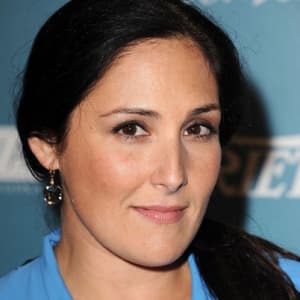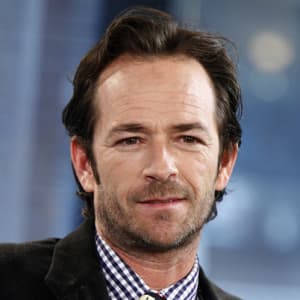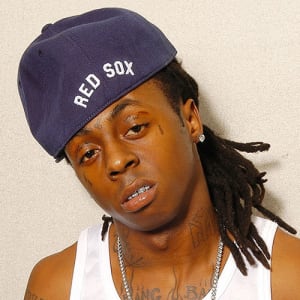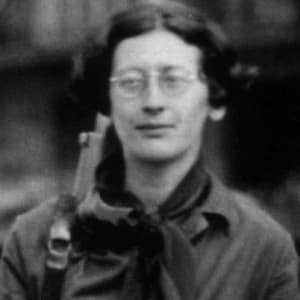
Charlie Parker
Charlie Parker was a legendary Grammy Award–winning jazz saxophonist who, with Dizzy Gillespie, invented the musical style called bop or bebop.
Synopsis
Charlie Parker was born on August 29, 1920, in Kansas City, Kansas. From 1935 to 1939, he played the Missouri nightclub scene with local jazz and blues bands. In 1945 he led his own group while performing with Dizzy Gillespie on the side. Together they invented bebop. In 1949, Parker made his European debut, giving his last performance several years later. He died a week later on March 12, 1955, in New York City.
Early Life
Legendary jazz musician Charlie Parker was born Charles Christopher Parker Jr. on August 29, 1920, in Kansas City, Kansas. His father, Charles Parker, was an African-American stage entertainer, and his mother, Addie Parker, was a maid-charwoman of Native-American heritage. An only child, Charlie moved with his parents to Kansas City, Missouri when he was 7 years old. At the time, the city was a lively center for African-American music, including jazz, blues and gospel.
Charlie discovered his own talent for music through taking lessons at public schools. As a teen, he played the baritone horn in the school band. By the time Charlie was 15, the alto saxophone was his instrument of choice. (Charlie's mother had given him a saxophone a few years prior, to help cheer him up after his father had abandoned the family.) While still in school, Charlie started playing with bands on the local club scene. He was so enamored of playing the sax that, in 1935, he decided to drop out of school in pursuit of a full-time musical career.
Early Musical Career
From 1935 to 1939, Parker played the Kansas City, Missouri nightclub scene with local jazz and blues bands, including Buster Professor Smith's band in 1937, and pianist Jay McShann's band in 1938, with which he toured Chicago and New York.
In 1939, Parker decided to stick around New York City. There he remained for almost a year, working as a professional musician and jamming for pleasure on the side. After his yearlong stint in the Big Apple, Parker was featured as a regular performer at a Chicago club before deciding to move back to New York permanently. Parker was at first forced to wash dishes in order to get by.
Charlie 'Bird' Parker
While working in New York, Parker met guitarist Biddy Fleet. It would prove a fruitful encounter. While jamming with Fleet, Parker, who was bored by popular musical conventions, discovered a signature technique that involved playing the higher intervals of a chord for the melody and making changes to back them up accordingly.
Later that year Parker heard the news of his father's death and went back to Kansas City, Missouri for the funeral. After the funeral, Parker joined Harlan Leonard's Rockets and stayed in Missouri for the next five months. Parker then decided it was time to head back to New York, where he would rejoin Jay McShann's band. It was with McShann's band, in 1940, that Parker made his first recording.
Parker stayed on with the band for four years, during which time he was given several opportunities to perform solo on their recordings. It was also during his time with McShann that Parker earned his famous nickname "Bird," short for "Yardbird." As the story goes, Parker was given the nickname for one of two possible reasons: 1) He was free as a bird, or 2) he accidentally hit a chicken, otherwise known as a yard bird, while driving on tour with the band.
Creating Bebop
In 1942, burgeoning jazz musicians Dizzy Gillespie and Thelonious Monk saw Parker perform with McShann's band in Harlem and were impressed by his unique playing style. Later that year, Parker signed up for an eight-month gig with Earl Hines. Then in 1944, Parker joined the Billy Eckstine band.
The year 1945 proved to be a landmark one for Parker. At this stage in his career, he is believed to have come into his maturity as a musician. For the first time, he became the leader of his own group while also performing with Dizzy Gillespie on the side. At the end of that year, the two musicians launched a six-week nightclub tour of Hollywood. Together they managed to invent an entirely new style of jazz, commonly known as bop, or bebop. After the joint tour, Parker stayed on in Los Angeles, performing until the summer of 1946.
After a period of hospitalization, he returned to New York in January of 1947 and formed a quintet there. With his group, Parker performed some of his best-known and best-loved songs, including his own compositions like "Cool Blues."
Later Years
From 1947 to 1951, Parker performed in ensembles and solo at a variety of venues, including clubs and radio stations. Parker also signed with a few different record labels: From 1945 to 1948, he recorded for Dial. In 1948, he recorded for Savoy Records before signing with Mercury.
In 1949, Parker made his European debut at the Paris International Jazz Festival and went on to visit Scandinavia in 1950. Meanwhile, back home in New York, the Birdland Club was being named in his honor. In March of 1955, Parker made his last public performance at Birdland, a week before his death.
Heroin Addiction and Death
Throughout his adult life, Parker's battles with heroin addiction, alcoholism and mental illness caused turbulence in his career and personal relationships. By the time Parker married Rebecca Ruffin in 1936, he had already started abusing drugs and alcohol. The couple had two children before divorcing in 1939. In 1942, Parker remarried to Geraldine Scott. Financial stresses created a rift between the couple, and Parker turned to heroin for an escape. He ended up leaving his second wife not long after they were married.
In June of 1946, while performing solo in Los Angeles, Parker had to cut his tour short when he suffered a nervous breakdown and was committed to a mental hospital, where he stayed until January of 1947. Newly clean in 1948, Parker married Doris Snyder, but the marriage fell apart within less than a year when Parker started using again. His heroin abuse only increased after the divorce.
In the early 1950s, Parker took on a live-in girlfriend, a jazz fan named Chan Richardson. Chan took Parker's last name and gave him two children: daughter Pree, who lived for only two years, and son Baird, who was born just a year and a day before Parker's death. To make matters worse, in 1951 Parker was arrested for heroin possession and had his cabaret card revoked, which meant he couldn't perform in New York clubs.
By the time he got the card back a year later, his reputation was so damaged that club owners still refused to let him play. Drug-addled and depressed, Parker tried to take his own life twice in 1954, by drinking iodine. Although he survived both attempts, his physical and mental health had greatly deteriorated.
In 1955, Parker was visiting with his friend Baroness Pannonica "Nica" de Koenigswarter when he suffered an ulcer attack and refused to go to the hospital. On March 12, 1955, Charlie Parker died in the baroness' New York City apartment of lobar pneumonia and the devastating effects of long-term substance abuse.




